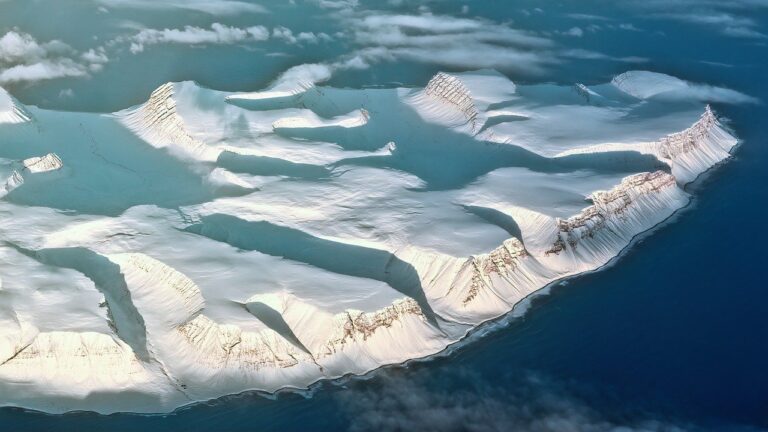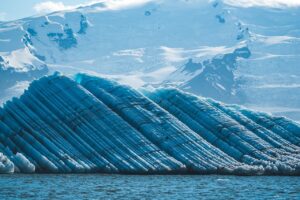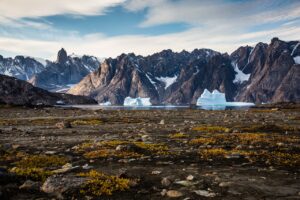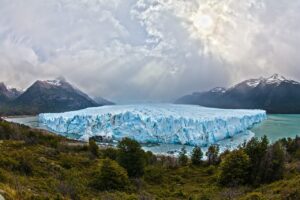10kclimatechallenge
10kclimatechallenge
Are you the next great climate scientist? Awarding $10,000 for the proven reproducible rate of CO2 forcing. (Verified by the UN IPCC)

Ocean Questions
These are all the questions I found related to this topic in the 3000+ pages of IPCC AR4 and AR5.
AR6 coming soon!
Today there are more questions about Antarctica sea ice thickness than there is about Artic sea ice because it is more complex due to land mass. One of the most important basic question is why is the Antarctica sea ice is growing today if the world is warming? Could the SH be cooling while the NH is warming?
For example, the IPCC states they have “low confidence” in understanding why Antarctica sea ice has been extending since 1979. (AR5 Section 10.5.1 Page 908)
The IPCC goes on to show an increase of Antarctica sea ice is extending by 1.5% per decade over the last 34 years, this is not very large. However, they cannot even tell if the overall volume is growing or not. (AR5 FAQ 4.1 Page 333)
The IPCC notes conflicting studies over time looking at possible causes of Antarctic sea ice trends, this includes “changes in stratospheric ozone” to freshwater melt making the ocean “more stratified, decreasing the upward heat flux and driving more sea ice formation”. (AR5 Section 10.5.1 Page 908)
On the later they go on to state “early studies suggested that stratospheric ozone depletion may have driven increasing trends in Antarctic ice extent”. However, they note recent studies that show sea ice extent decreases by changes in stratospheric ozone, not the other way. (AR5 Section 10.5.1 Page 908)
The IPCC does note the ice differs by region in Antarctica. For example, they note with “medium confidence” of a thinning ice shelve in of West Antarctica’s Amundsen Sea region and “medium confidence” this thinning is from a “high ocean heat flux”. (AR5 Chapter 4 Executive Summary Page 320)


So Many Ocean Questions
The IPCC distinguishes between sea ice and surface ice.
For example, the IPCC states their knowledge of Greenland glaciers is greater than their understanding the Antarctica ice sheet where they admit their understanding is low. (AR5 Chapter 10 Executive Summary Page 870)
The IPCC states it is “likely” greenhouse gases have caused surface melting in Greenland since 1993 as well as retreating glaciers since the 1960s. Internal variability may have made it worse as well. (AR5 Chapter 10 Executive Summary Page 870)

The Questions Chapter
Over 150 climate questions from AR4/AR5.
Questions and more questions.
This section highlights all the important climate questions described in the UN’s IPCC assessment reports, AR4 and AR5. AR6 is coming soon!
AR4 and AR5 make up the most complete and current climate information out there, a road map for future generations. However, they are not the easiest reads because information on any particular subject is found throughout the 3000+ pages of these reports.
You make think over time there would be less questions as the climate gets figured out, but from AR4 to AR5 the number of question and material increased by several fold.
One reason for this increase in climate questions from AR4 to AR5 is the fact many predictions made in AR4 were missed, and things have been learned.
The IPCC examines most of these in more detail throughout AR5 using AR4 as a base for the science.
Inspiring the next generation
You might be on the same path?
Sharing what I have learned in my 35 years of being a “climate activist”.
Be an informed climate activist or maybe even the next great scientist.
AR4 and AR5 are road maps for the next generation of climate scientists.
I am awarding $10,000 for the proven rate of CO2 forcing to the next great scientist of our time.
Review of the IPCC AR4 and AR5
Collection of 9200 peer-reviewed climate studies. This is the science with 100s of questions, contradictions, missed predictions, areas lacking data, and more.
Following the Science
Become an informed climate activist!
10kclimatechallange
All the Chapters
My Personal Climate Journey.
35 years and counting. You may be on the same journey.
Review of IPCC AR4 and AR5
Why AR4 and AR5 are so important.
Theory Chapter
Breaks down CO2 forcing and why models are important.
Temperature Chapter
What is warming? Entire earth? Oceans? Surface? What to know.
Model Chapter
Why use models? How are they doing?
Ocean Chapter
Role of the world's oceans that stores over 90% of Earth's heat.
Atmosphere Chapter
Is the atmosphere cooling or warming the earth?
Gases Chapter
Focus on CO2 and other greenhouse gases.
Civilization Chapter
Looking at past climate change affect on previous civilizations.
Question Chapter - ON LINE
Summary of every important question I found in AR4/AR5. More than 150 of them.
Prediction Chapter
Summary of every important prediction I found in AR4/AR5.
What is the IPCC?
UN’s IPCC Assessment Reports 4 and 5 (AR4 2007 and AR5 2014). These UN reports include over 600 authors from 32 different countries assessing 9,200 peer-reviewed studies so they are the all-inclusive on the current state of climate science putting out new reports every seven or so years.
AR5 explains the United Nation’s IPCC was created in 1988 to provide world governments with “clear information on the state of today’s climate science as well as potential impacts, and options for adaptation and migration based on regular assessments”. (AR5 Section 1.2.1 page 123)

Weather versus Climate
Is the weather or the climate easier to predict?




